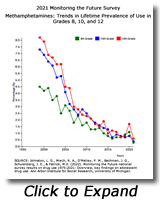Prevention and
Education
Substance abuse occurs one person at a time, but the result often effects the user's family, educators, employers and community. When these stakeholders recognize the benefit of substance abuse education and prevention and then commit to focus their respective expertise, effective community based programs can be developed.
An effective community drug prevention program will:
- Assess local drug abuse patterns and at risk populations
- Utilize existing community resources
- Employ prevention principles
- Enhance factors that promote abstinence, reduce factors that trigger relapse
- Promote prevention techniques that are transferrable to all abused substances
- Promote parenting skills: rule setting, praise behavior and monitoring techniques
- Intervene early - as early as preschool to redress known risk factor such as:
- aggression
- poor social skills
- academic difficulties
- Promote factors associated with abstinence: self-control emotional awareness social problem solving learning skills
 Combine programs when appropriate, such as: family, school and faith-based groups, to enhance efficiency by engaging multiple populations.
Combine programs when appropriate, such as: family, school and faith-based groups, to enhance efficiency by engaging multiple populations.- Provide recognition and intervention training for community sentinels, such as:
- teachers
- clergy
- medical professionals
- Limit drug availablity by enforcing anti-drug policies
- Address causes of chronic poverty within your community
Nurses, especially school nurses, are well positioned to monitor for drug abuse risk factors and initiate early therapeutic intervention. Studies have demonstrated that prevention and early intervention are effective and cost effective. Nurses can also use their positions of respect in the community to promote the development and funding of drug abuse programs.
©RnCeus.com
 Combine programs when appropriate, such as: family, school and faith-based groups, to enhance efficiency by engaging multiple populations.
Combine programs when appropriate, such as: family, school and faith-based groups, to enhance efficiency by engaging multiple populations.